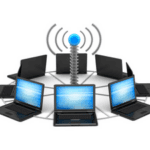While 5G may seem like just another incremental improvement in wireless technology, it represents a major leap forward that will transform business communications in profound ways.
Previous generations of wireless networks focused mainly on increasing bandwidth and download speeds.
But 5G introduces fundamental changes to network architecture that will support innovative new use cases across every industry.
The ultra-low latency and massively increased capacity of 5G networks will make real-time collaboration, automation, AI, VR/AR, and the Internet of Things scalable in a way not possible before.
Some key differences that set 5G apart:
- Millimeter wave spectrum enables more than 10 times the frequency bandwidth of 4G. This translates to exponentially faster speeds.
- Advanced antenna technologies like massive MIMO allow efficient distribution of bandwidth across many more devices concurrently.
- Software-defined networking introduces flexibility to redirect resources dynamically based on real-time demand.
- Edge computing brings data processing physically closer to the user for reduced latency.
5G won’t just be faster – it opens up possibilities that will reshape business operations, workforce mobility, and customer experiences.
It lays the groundwork for smart factories, autonomous vehicles, remote healthcare, immersive education, and technologies we can’t even conceive of yet.
Why Choose 5G Over 4G?
For all but the simplest use cases, 5G blows away 4G capabilities:
Near-Instant Response Times
Speed of light physics imposed a ceiling on 4G latency around 50 milliseconds. But 5G’s redesigned cellular architecture brings this down to 1 millisecond or less.
For perspective, that’s up to 50 times faster than blinking your eye.
This will enable real-time decision making and control never possible before.
Any function dependent on rapid feedback from devices and systems will benefit tremendously from 5G.
Multi-Gbps Throughput
5G’s raw bandwidth peaks over 10 Gbps. For context, that’s 100 times faster than typical 4G speeds.
Large file transfers and bandwidth-intensive processes will finish in fractions of a second. Constraints from slow networks will be eliminated for AR, VR, video collaboration, and more.
Even peak hour congestion won’t slow 5G down.
Massive Device Density
A sophisticated 5G infrastructure can maintain high speeds while supporting over 1 million devices per square kilometer.
This lays the foundation for massive Internet of Things deployments where potentially billions of sensors connect to the cloud simultaneously.
Novel applications leveraging real-time data from so many endpoints will emerge across industries.
Intelligent, Flexible Networks
5G networks have native intelligence to dynamically adjust resources utilized across cells, frequencies, and devices to optimize overall performance.
This enables smooth operation as high bandwidth and low latency applications come online.
Network slicing allows guaranteed capacity partitions for mission critical functions.
Step Into the Future with 5G
5G represents a tipping point for business innovation. Its unmatched speed, responsiveness, capacity, and flexibility will enable transformation across every industry.
With 5G, the future is here. Those who leverage its potential will have a decisive competitive advantage.





